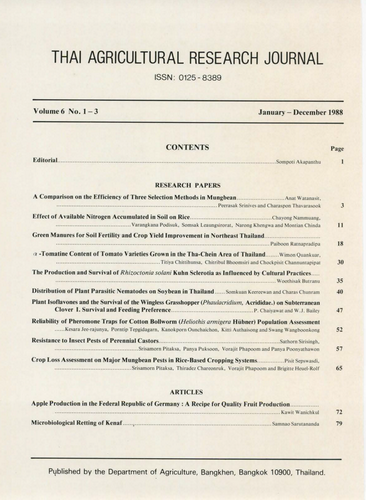Plant Isoflavones and the Survival of the Wingless Grasshopper (Phaulacridium, Acrididae.) on subterranean Clover I Survival and Feeding Preference
Abstract
The survival, development and feeding preference of Phaulacridium species 2 is affected by the chemical nature of their host plants. Experiments conducted at the University of Western Australia showed that Trifolium subterranean (Subterranean clover – Seaton Park Strain) reduced survival of the first instar; none of the hatchlings developed beyond the first instar. When early instars were fed on mixed diets, the addition of clover significantly reduced survival and development. Two other pasture plant species Artotheca calendula (capeweed) and Lolium rigidum (Wimmera ryegrass), showed a differential effect on survival. Insects fed on capeweed had a higher survival and development level than when fed on Wimmera ryegrass. A combined diet of capeweed and ryegrass was more favourable than ryegrass alone, and gave the highest body weight.
Results of feeding preference experiments indicated that when there was a food choice, the early instars still ate clover despite the fact that this plant reduced survival. Feeding preference changed with age; for the second and third instars the insects preferred capeweed to subterranean clover, although they still consumed some clover in a mixed diet. The fifth instars changed their feeding preference from capeweed to subterranean clover. Plant species ingested by early instar hoppers appears crucial to the hopper’s development, growth and survival.
Downloads
Published
How to Cite
Issue
Section
License

This work is licensed under a Creative Commons Attribution-NonCommercial-NoDerivatives 4.0 International License.
Thai Agricultural Research Journal



